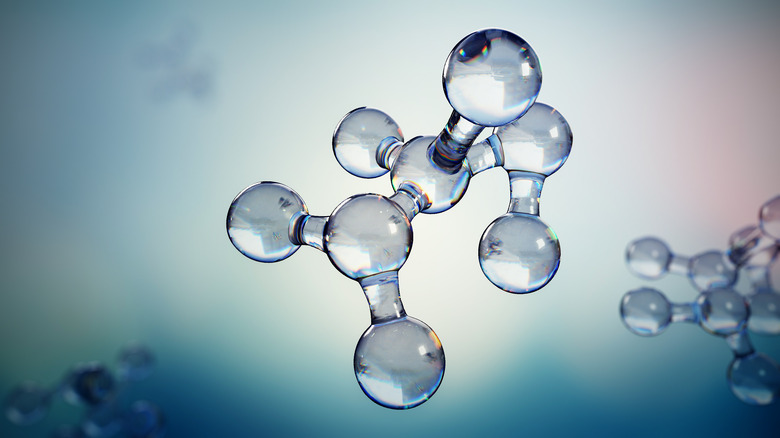How To Convert Molecules To Atoms
Every type of molecule consists of its own particular set of atoms. The number of atoms in a molecule, the kinds of atoms in a molecule and the arrangement of atoms in a molecule all combine to determine the the molecule's unique properties. That's why it's important to be able to describe a group of molecules in terms of the atoms that compose them, whether they are simple molecules with two atoms or very large, complex molecules such as DNA, which have millions of atoms.
TL;DR (Too Long; Didn't Read)
It's not always possible to do a simple conversion from molecules to atoms because some molecules are complex structures made up of more than one type of atom.
Simple Molecule to Atom Conversions
Simple Molecule to Atom Conversions
A basic substance that can't be simplified, such as hydrogen or oxygen, is known as an element. The smallest amount of that element is known as an atom. When two or more atoms are chemically joined together, this is called a molecule. In some cases, such as hydrogen and oxygen, the molecule is made entirely of the same atom, such as hydrogen gas (a molecule) is made entirely of two hydrogen atoms. Here, converting molecules to atoms is as simple as dividing by two.
Complex Molecule to Atom Conversions
Complex Molecule to Atom Conversions
In other cases, more than one type of atom makes up the molecule. For example, a carbon dioxide molecule has two oxygen atoms and one carbon atom (a total of three atoms in one carbon dioxide molecule). So if you have two molecules of carbon dioxide, you have six atoms in total: four oxygen atoms and two carbon atoms.
Avogadro's Number
Avogadro's Number
When you're converting molecules to atoms, it's useful to know about moles. A mole is a unit used to measure a substance amount, to let scientists predict the masses of substances used in chemical reactions. One mole is the Avogadro's number of particles (atoms, molecules, ions or electrons) in a substance. Converting to moles is fairly easy because the conversion is always the same. A mole is 6.022 × 1023 of something, and this number is referred to as Avogadro's number. In chemistry, this is: # of moles × Avogadro's number = # of atoms or molecules. Whether the answer is atoms or molecules depends what you're talking about. If you're talking about water, a mole is Avogadro's number of water molecules. If you're talking about hydrogen atoms, a mole is Avogadro's number of hydrogen atoms. For example, if you know you have 75.3 × 1023 water molecules, you can work out the number of moles by: 75.3 × 1023 ÷ 6.022 × 1023 = 12.5 moles of water.
Cite This Article
MLA
Gillespie, Claire. "How To Convert Molecules To Atoms" sciencing.com, https://www.sciencing.com/convert-molecules-atoms-4509905/. 26 April 2018.
APA
Gillespie, Claire. (2018, April 26). How To Convert Molecules To Atoms. sciencing.com. Retrieved from https://www.sciencing.com/convert-molecules-atoms-4509905/
Chicago
Gillespie, Claire. How To Convert Molecules To Atoms last modified March 24, 2022. https://www.sciencing.com/convert-molecules-atoms-4509905/
